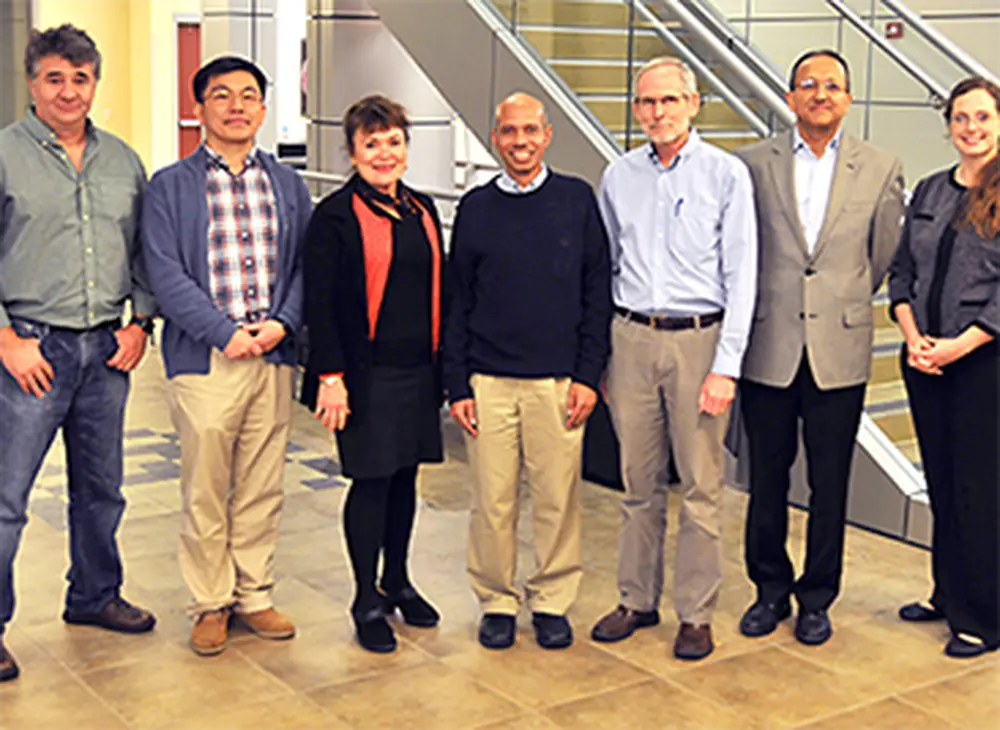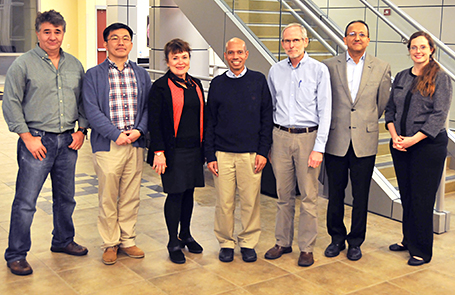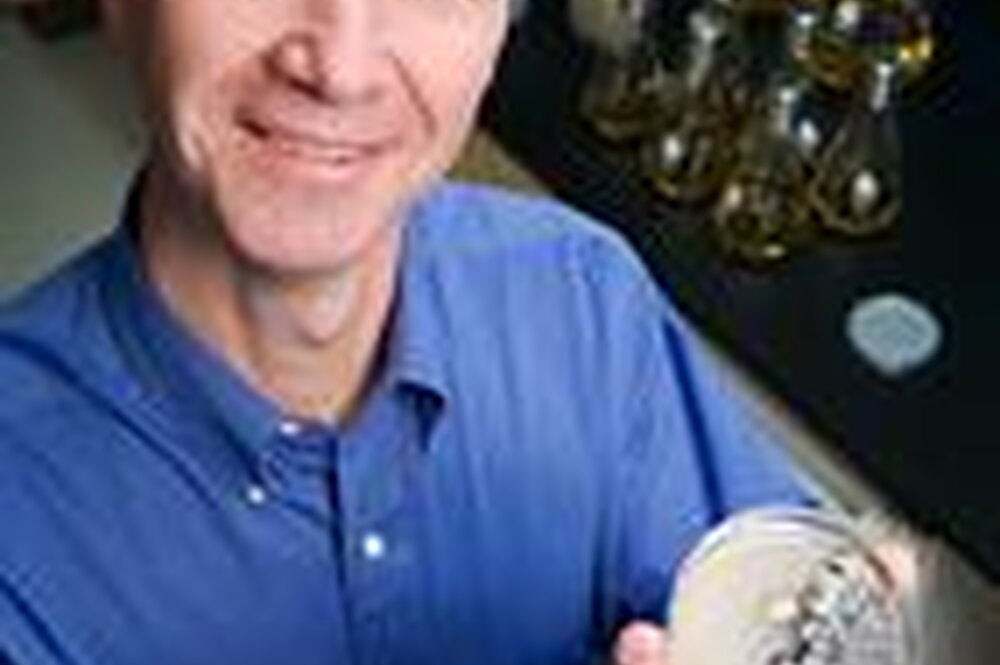

When you think about all the ways to take medicine, you might imagine pills, bottles, nasal sprays, or—take a breath—needles. Researchers at Illinois, however, are working on what they say is a more effective way to deliver drugs: Tiny, swimming biological machines in your bloodstream.
That’s not all. In fact, swimming “biobots” are just one of the ideas being researched at Illinois as part of a multi-institutional initiative called Emergent Behaviors of Integrated Cellular Systems (EBICS), which recently received $25 million in National Science Foundation (NSF) renewal funding for the next five years to build living, multi-cellular machines to solve environmental, health, and security problems.
By studying the behavior of living cells and combining them with synthetic tissue, researchers at Illinois from the colleges of LAS and Engineering are creating biological machines to deliver drugs more effectively, function as internal diagnostic tools, or serve as contaminant sensors in the field. These biological machines are swimming bots that can be propelled by heart muscles to help deliver drugs and treat diseases.
The EBICS project is unique in that both the funding and management are shared equally by the primary participants, which include the University of Illinois at Urbana-Champaign, the Georgia Institute of Technology and the Massachusetts Institute of Technology. Eight other institutions also provide research assistance.
According to Rashid Bashir, EBICS co-principal investigator and head of the Department of Bioengineering at Illinois, the goal of the project is to build non-natural functions with cells.
“Take vascular disease, for example,” Bashir said. “One could approach the problem from the standpoint of, ‘What if we could take passive vascular cells and combine them with cardiac muscle cells to create vascular tissue that could pump?’ Such devices would allow patients’ own bodies to become part of the solution.”
The group’s efforts aren’t limited to improving human health. “We’re also interested in building living machines that can do things like sense toxins in water and potentially neutralize them,” Bashir adds.
Two LAS professors, Martha Gillette and Hyunjoon Kong, of cell and developmental biology and chemical and biomolecular engineering, respectively, are two members of the EBICS team at Illinois. Gillette’s group is developing neuronal circuits to provide sensing and processing. Kong is developing new biomaterials to “house” the cells and the machines.
In the first phase of the project, the researchers examined the behaviors of muscle, neuronal and vascular cells. Although much is known about how these cells function, little was known about integrating them.
“We needed to learn how to grow diverse cells together, as each has its own ideal growing conditions,” Bashir explains. “We also needed to learn how to get them to communicate with each other.”
Along with Bashir, Gillette, and Kong, the Illinois EBICS team consists of Taher Saif of Mechanical Science and Engineering, and Gabriel Popescu of Electrical and Computer Engineering.
Saif’s group developed swimming bots. These millimeter-scale “swimmers” can propel themselves in one direction using the force generated by heart muscle cells. According to Saif, this research could pave the way for internal diagnostics that are more accurate than poking or prodding, or they can be developed to deliver drugs to treat disease.
For another biobot, the researchers randomly placed rat heart muscle cells on a layer of soft plastic hydrogel that they designed and printed with a 3-D printer. The natural contracting and relaxing of the cells allowed the bot to pull itself along or “walk” in culture medium.
Another “walking” device relies on skeletal muscle cells. It responds and moves on command to electric fields. Most recently, the team has been working with muscle cells that can be controlled remotely by blue light and could be the key to developing new remotely controlled tissues and systems.
